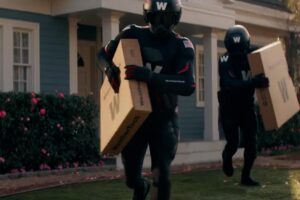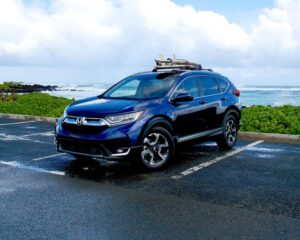
The annual Super Bowl advertising frenzy reached new heights this year, with advertisers plunking down $6.5 million to reach viewers for 30 seconds—$1 million more than for last year’s game and nearly three times as much as 20 years ago. Not for nothing: Even though it was the lowest-rated Super Bowl in 53 years, the Rams-Bengals game still figures to be the most-watched television event of the year, because the game is every year. As such, the Super Bowl has become advertising’s premier event, with companies delivering their strongest, most creative and engaging pitches.
Each batch of Super Bowl ads brings media reviews. But I prefer data over pundits’ subjective takes, so The Harris Poll created the Brand Bowl Index to quantify the commercials’ impacts on overall brand equity and its four components: momentum (whether consumers perceive a brand as gaining or losing market share), consideration (how likely a consumer is to purchase the brand’s products), quality and familiarity. No surprise: 83% of viewers deemed the ads to be an essential part of the Super Bowl viewing experience. The overall winner was WeatherTech, whose ad showing a special ops-like team deploying vehicle protection gear spurred an eight-point bounce in the company’s brand equity, edging out Disney+ and its goat-filled entry.
We can learn more from the big game than who came out on top, however. Seeing what worked and what didn’t in the Big Game imparts lessons upon which advertisers can go to school for the remainder of the year. Here are three:
It pays to pay
At roughly 62 times the cost of an average national prime time spot, 30 seconds in the Super Bowl is a pricey play to call. So is it worth it? This year, 30 brands found out, buying Super Bowl air time for the first time. In many cases the investment paid off, driving a substantial increase in brand equity for the Super Bowl rookies. Wallbox, the first electric vehicle charging company to run a Super Bowl ad, saw its spot about a lightning-strike survivor learning to live with electricity charge its brand equity (up 2.8), familiarity (+3.7) and consideration (+4.4). Other first-time entrants, such as Irish Spring and Expedia, saw similarly positive results.
In fact, 63% of those who watched the Super Bowl agreed that they were more likely to trust an up-and-coming brand that advertises in major events such as the Super Bowl. It’s the advertising equivalent of dressing for success: By showing up alongside better-known, established brands, a product associates itself with their credibility in the consumer’s mind.
The takeaway for advertisers is to embrace tentpole television opportunities: award shows such as the Oscars, the Golden Globes and the Grammys as well as other big sporting events such as baseball’s post-season (assuming it actually has a season), the NBA Finals and football’s fall return.
Visualize success
What drew people to certain commercials? According to our data, strong visual appeal was the biggest factor, with a plurality of viewers (40%) naming it as most important. Think of the WeatherTech commandos swooping in, or Disney’s goat-ified cast of characters or nebbish Eugene Levy transforming into an action star after he gets behind the wheel of a yellow Nissan.
The three next biggest factors, each cited by more than 30% of viewers, were the ad’s tone (emotion, energy, etc.), its celebrity casting (think Arnold Schwarzenegger’s turn as the Greek god Zeus) and its content (topic, script soundtrack, etc.).
The bottom line: These are still advertisements. If you want to catch viewers before they use the break in the action to grab a snack or visit the bathroom, you need something arresting to grab and hold their attention. Then don’t let them go.
Read the room
We’re approaching the COVID-19 pandemic’s third year and consumers are anxious, uncertain and stressed out. Burnout is endemic and tempers are often short. Is it any wonder that the overwhelming majority of Super Bowl ads were comedic?
It’s true that comedy is often the go-to tone for Super Bowl commercials, but it was especially pronounced this year: 63% of the commercials struck a humorous tone, highlighted by Scarlett Johansson and Colin Jost imagining a dystopian future where Amazon’s Alexa can read minds. That figure was up from 56% in each of the last two years. The next biggest category was upbeat commercials (such as Michelob Ultra’s featuring the greatest bowling alley ever) with 17% of ads falling into that category. Again: People want a distraction from endemic stress.
While approximately one-quarter of ads were heartfelt in 2020 and 2021, such spots accounted for only 13% of this year’s ads. That may have been a mistake. Pay attention ad executives: When asked what kind of tone they want in next year’s Super Bowl ads, viewers not surprisingly identified comedic (56%), followed by heartfelt (29%), unique (28%) and action-packed (28%). This remains a country ready for a good laugh but also some lift.
The NFL is often described as a copy-cat league, that teams rip off successful organizations’ blueprints. Advertising can be the same way, in the best sense. Learn from what worked in this year’s big game and develop it right up until next year’s Brand Bowl.
Published on February 23, 2022. AdAge.com





